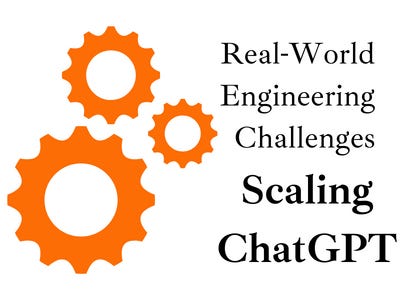Scaling ChatGPT: Five Real-World Engineering Challenges

🌈 Abstract
The article discusses the engineering challenges faced by the OpenAI team in scaling ChatGPT, the popular AI chatbot, to meet the explosive demand after its launch. It covers the key aspects of how ChatGPT works, the importance of GPUs, and five major scaling challenges the team had to overcome.
🙋 Q&A
[01] A refresher on OpenAI, and an introduction to Evan
1. How did Evan join OpenAI and end up heading the Applied engineering group that builds ChatGPT?
- Evan joined OpenAI in October 2020 when the Applied engineering group was newly formed. He did not have a PhD in Machine Learning but was excited by the idea of building APIs and engineering teams. He managed the entire Applied Engineering organization from its early days through the launch and scaling of ChatGPT.
[02] How does ChatGPT work? A refresher.
1. What are the key steps involved in how ChatGPT generates responses?
- The key steps are:
- Input: The text from the user's prompt is taken as input.
- Tokenization: The input text is chunked into tokens, which roughly map to words or parts of words.
- Create embeddings: The tokens are converted into vector representations called embeddings.
- Multiply embeddings by model weights: The embeddings are multiplied by hundreds of billions of model weights.
- Sample a prediction: The resulting vector represents the probability of the next most likely token, which is then selected and output as the next word.
2. How is the Transformer architecture, with its self-attention mechanism, a challenge for scaling?
- The self-attention mechanism in the Transformer architecture means that each token is aware of every other token. This results in the computation scaling quadratically, so predicting the 1,000th token requires about 1 million operations, compared to 10,000 operations for the 100th token.
[03] Importance of GPUs
1. Why are GPUs so critical for the operation of ChatGPT and other OpenAI products?
- GPUs are the "lifeblood" of ChatGPT and OpenAI's APIs. The extremely short supply of GPUs, their quirks, and cost dominate how the team operates and scales these products.
[04] Five scaling challenges
1. What was the key challenge with the KV cache and GPU RAM?
- The KV cache, which stores the results of previous computations to avoid recomputing them, needs to be stored in the expensive and limited GPU RAM. Cache misses, where the needed data is not in the cache, are extremely expensive as they require recomputing a large number of operations.
2. How did the team optimize batch size to balance compute and memory bandwidth?
- The team needed to find the right batch size to "saturate" the GPUs, meaning to have the right balance of floating-point operations per second (FLOPS) to fully utilize the compute without being limited by memory bandwidth.
3. What were the limitations of using simple GPU utilization metrics, and what metrics did the team find more useful?
- Simple GPU utilization metrics were misleading, as they didn't capture whether the GPUs were truly saturated in terms of the ratio of FLOPS to data movement (arithmetic intensity), or whether they were running out of KV cache. The team found that monitoring batch size and KV cache utilization were more useful metrics.
4. How did the team deal with the challenge of sourcing GPUs from different regions and data centers?
- The team had to quickly adopt a multi-region, multi-cluster, and globally distributed approach to get GPUs from wherever they could, as the supply was extremely constrained. Geographical proximity to users became less of a priority than just having GPUs "ready to go."
5. Why was the team unable to simply autoscale their GPU fleet to meet demand?
- There was a fundamental shortage of GPUs available to buy or rent, with demand outpacing supply. The team had no choice but to operate within the fixed GPU capacity they had, leading to situations where they had to turn users away when they hit capacity limits.
[05] Lesson Learned
1. What were some of the key lessons the team learned about scaling ChatGPT?
- The team learned that both low-level details (like KV cache optimization) and high-level system design were important.
- They had to adapt their scaling approaches to the unique constraints of the system, rather than relying on standard practices like targeting 80% CPU utilization or autoscaling.
- Diving deep into the lowest-level implementation details was critical, as the smallest changes could have a big impact.
- The pace of development and the scale of challenges will only continue to grow as the models and capabilities advance.